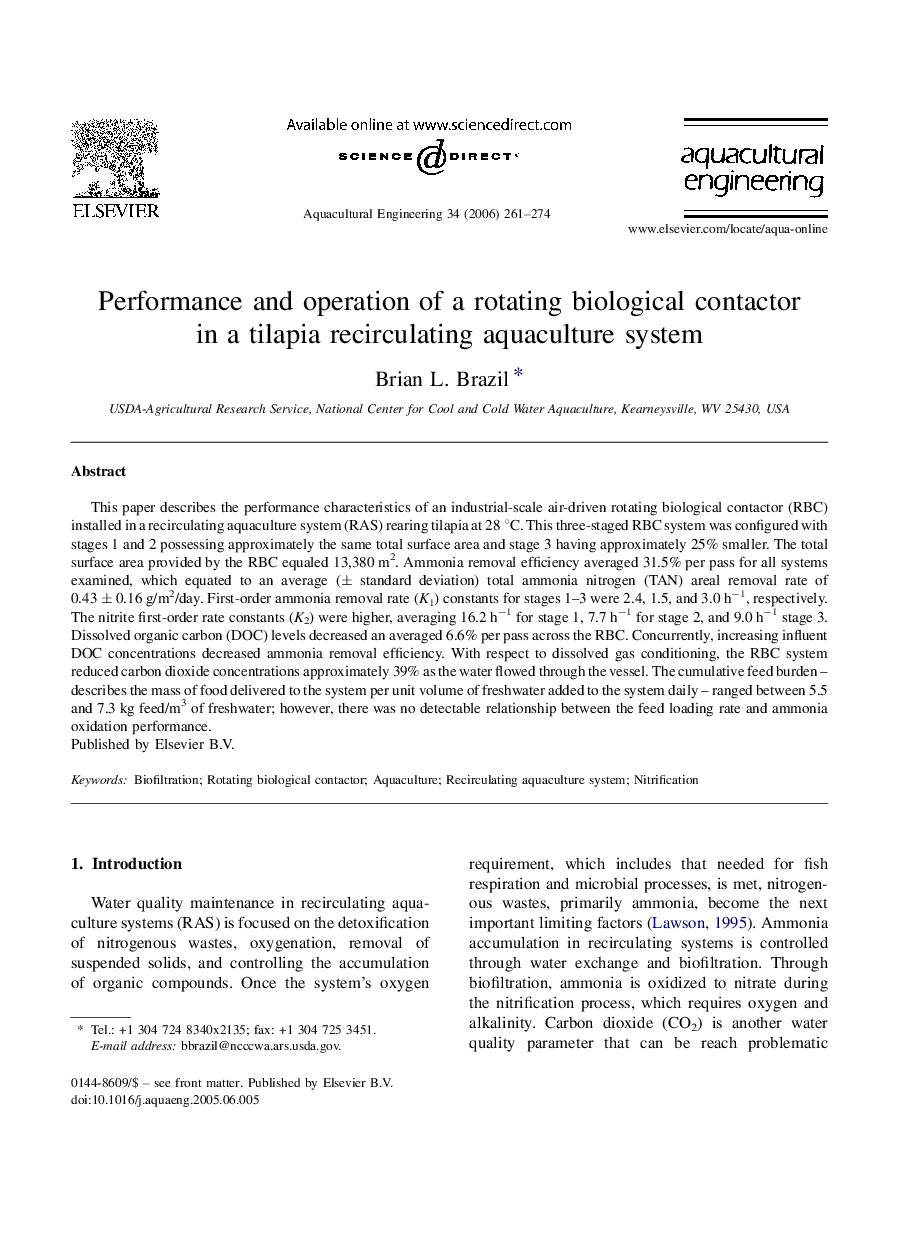| Article ID | Journal | Published Year | Pages | File Type |
|---|---|---|---|---|
| 6381665 | Aquacultural Engineering | 2006 | 14 Pages |
This paper describes the performance characteristics of an industrial-scale air-driven rotating biological contactor (RBC) installed in a recirculating aquaculture system (RAS) rearing tilapia at 28 °C. This three-staged RBC system was configured with stages 1 and 2 possessing approximately the same total surface area and stage 3 having approximately 25% smaller. The total surface area provided by the RBC equaled 13,380 m2. Ammonia removal efficiency averaged 31.5% per pass for all systems examined, which equated to an average (± standard deviation) total ammonia nitrogen (TAN) areal removal rate of 0.43 ± 0.16 g/m2/day. First-order ammonia removal rate (K1) constants for stages 1-3 were 2.4, 1.5, and 3.0 hâ1, respectively. The nitrite first-order rate constants (K2) were higher, averaging 16.2 hâ1 for stage 1, 7.7 hâ1 for stage 2, and 9.0 hâ1 stage 3. Dissolved organic carbon (DOC) levels decreased an averaged 6.6% per pass across the RBC. Concurrently, increasing influent DOC concentrations decreased ammonia removal efficiency. With respect to dissolved gas conditioning, the RBC system reduced carbon dioxide concentrations approximately 39% as the water flowed through the vessel. The cumulative feed burden - describes the mass of food delivered to the system per unit volume of freshwater added to the system daily - ranged between 5.5 and 7.3 kg feed/m3 of freshwater; however, there was no detectable relationship between the feed loading rate and ammonia oxidation performance.
